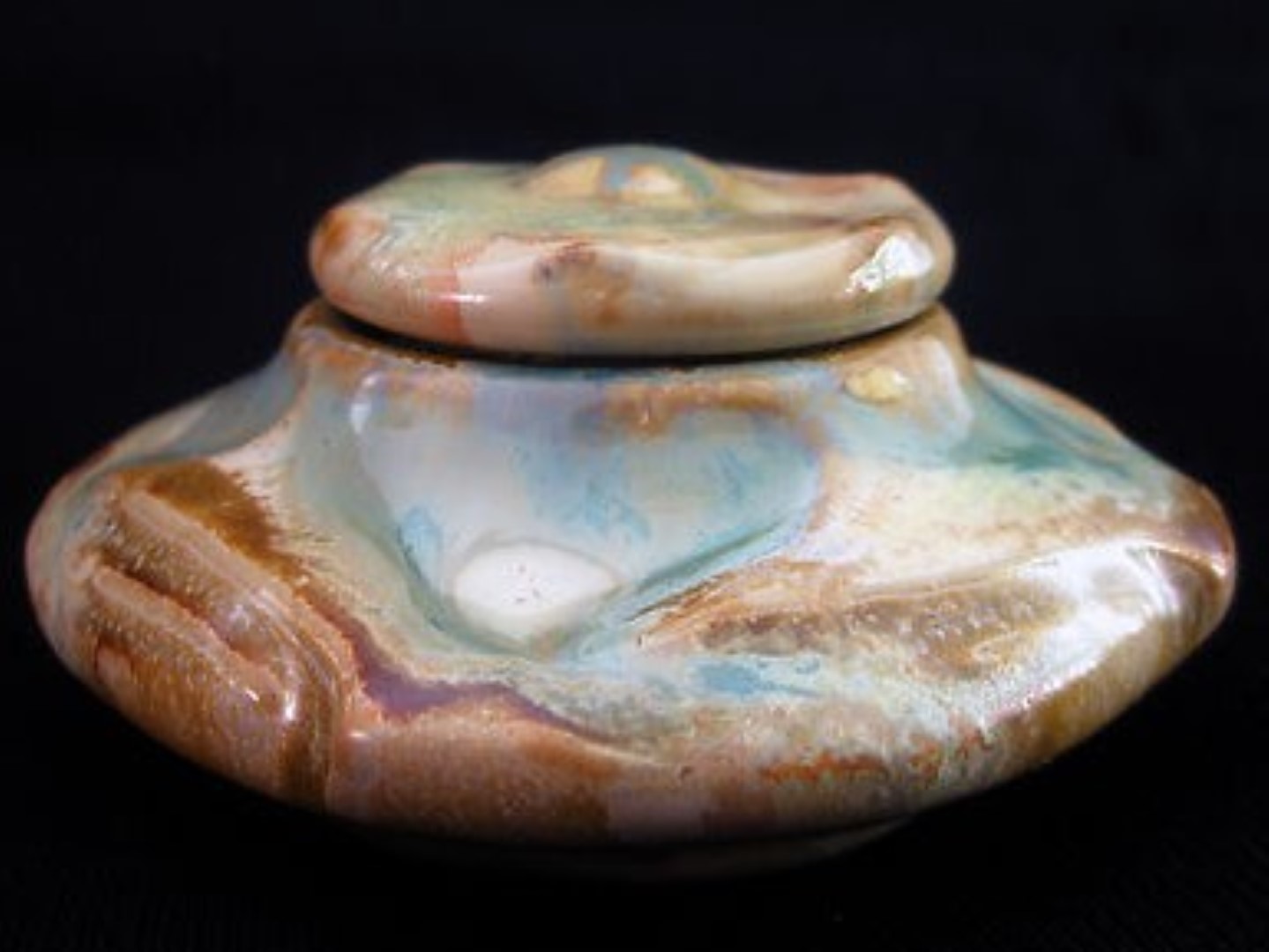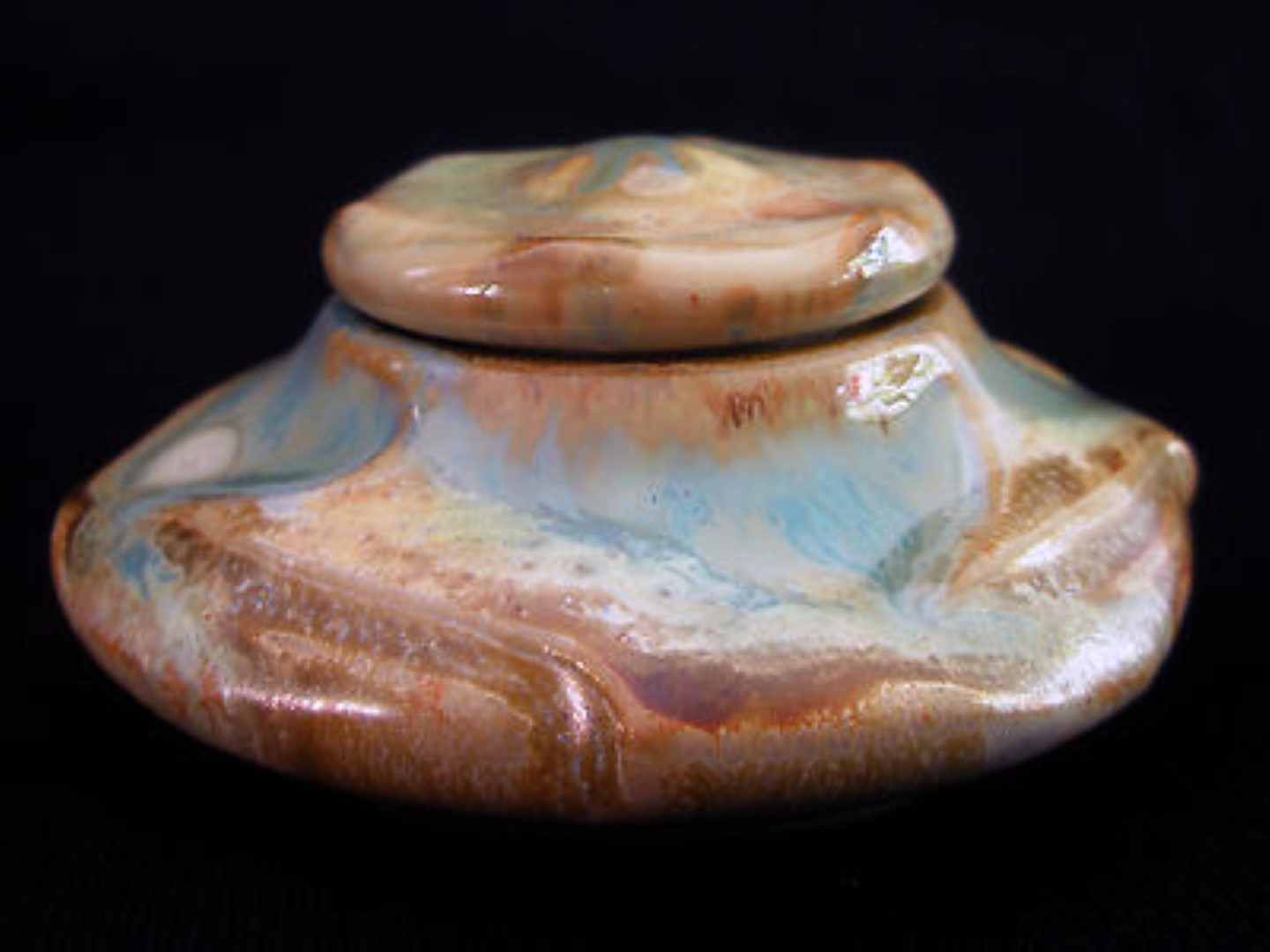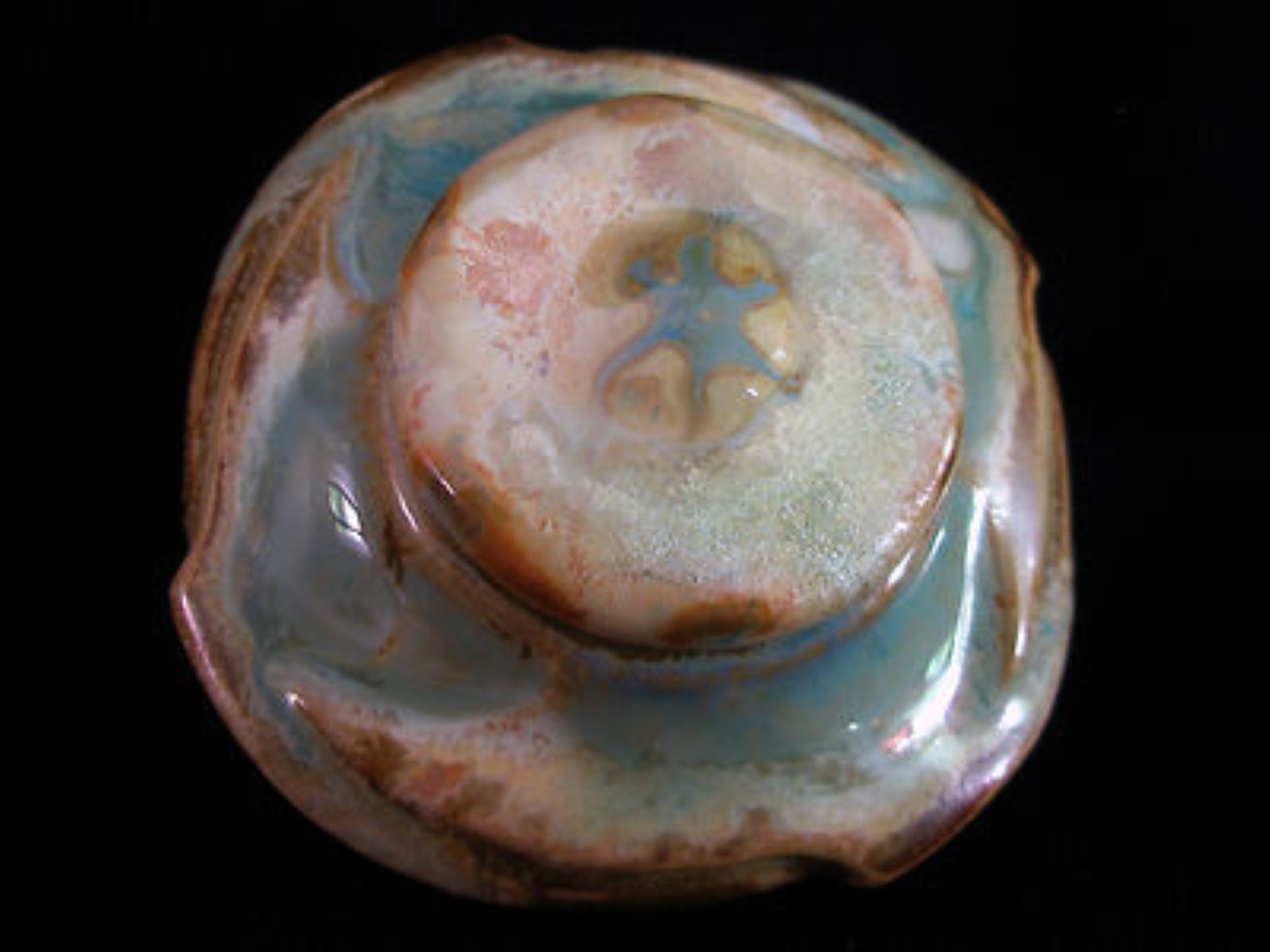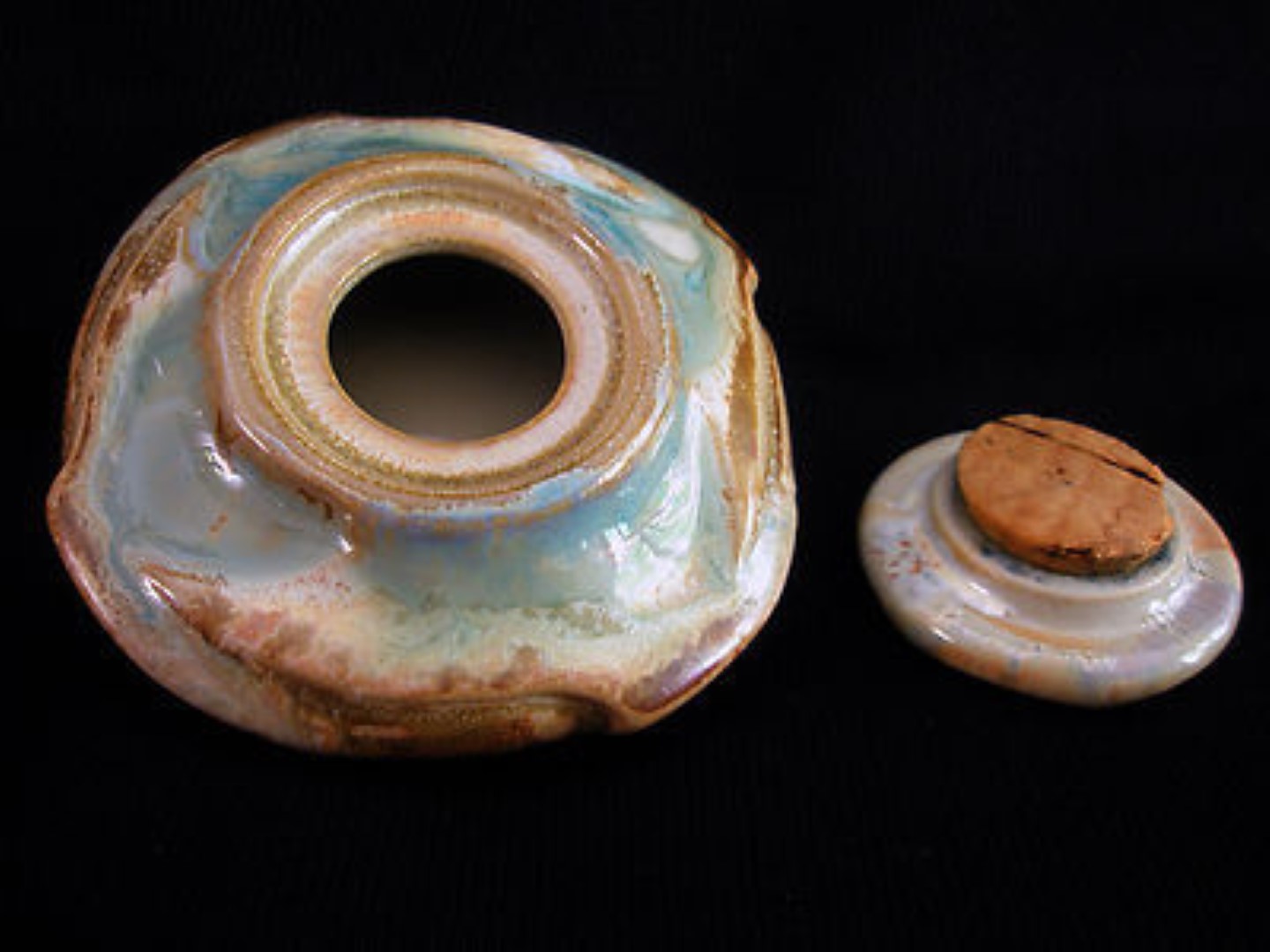
Dalpayrat Flambé Glazed Art Nouveau Inkwell
| Categories | Ceramics/Porcelain "Named" Makers |
| Material | Pottery |
| Markings | Dalpayrat Mark |
| Manufacturer | Dalpayrat |
| Origin | France |
| Date or Era | circa 1900 |
| Measuring | 3” diameter; 1 ⅝” high |
Dalpayrat flambé glazed Art Nouveau inkwell made for La Maison Moderne. The inkwell was rendered in the typical French Art Nouveau flambé glaze of Dalpayrat, which was likely produced for retail at La Maison Moderne (Paris). This example is particularly nice and unusual for the lack of oxblood glaze application, which Dalpayrat was fond of using. The glaze on this piece is replete with greens, green-blue and earth tone hues, as well as Dalpayrat’s typical glaze crystalization effects, all rendered on his special reinforced stoneware. Inkwells, desk accessories and other small pieces by Dalpayrat were particularly popular with the French public and were produced to satisfy the tastes and decor demands of the “fin de siècle” Parisian nouveau riche. “Dalpayrat” stamp/seal is on the bottom of the inkwell base.
Adrien-Pierre Dalpayrat (French, 1844–1910) was born in Limoges. As a youngster with an interest in painting and design, he attended a local art school and subsequently trained at the Limoges Municipal School of Porcelain Painting. In the first decades of his career, Dalpayrat was a faïence painter, working at six different factories between 1867 and 1888. In 1889, he settled down near Paris in Bourg-la-Reine, a town with a long history of porcelain manufacture. At around this time, he dropped the designation of ‘porcelain painter’ and began to identify himself as a ‘ceramist’ or ‘artist-ceramist.’ From that time forward, he devoted his time mostly to stoneware, a material revered for its Japanese associations and in vogue at the time given the published and popular review of Asian art by Sigfried Bing.
Dalpayrat’s studio executed objects by Maurice Dufrêne, designer of furniture, textiles, glassware, silverware, and ceramics. Dufrêne was the director and manager of La Maison Moderne, an association of artists who worked together to create designs that could be produced in multiples. Dalpayrat was well known for his “sang de boeuf” (oxblood) flambé pottery, so much so that the term “Dalpayrat red” was coined to designate his distinctive glaze. Modeled after the oxblood glazes on Chinese pottery centuries earlier, Dalpayrat’s version diverges in interesting and organic ways with swirls of color and irregular surface characteristics that perfectly encapsulates the French Art Nouveau aesthetic. Perfected by 1892, Dalpayrat unveiled his oxblood glaze at the prestigious Galerie Georges Petit in Paris, where he exhibited 50 stoneware pieces based on models by Alphonse Voisin-Delacroix. His success with the high fire glazed stoneware was immediate, and since that fateful exhibition, Dalpayrat has been recognized as a master of the art form and a key figure in French Art Nouveau.
Sold for $400 in December 2012
Content disclaimer. The information posted is the owner’s best knowledge and may not have been vetted by the SOIC. We welcome comments, corrections, and additions, working to make our website information comprehensive and accurate.
Join the Society of Inkwell Collectors (SOIC) – it’s free!
Founded in 1981 as a non-profit organization,
we are documenting inkwells (and accessories).
We’re here to help and inform!



